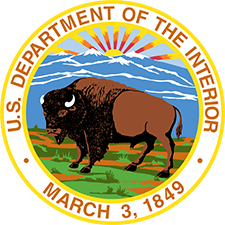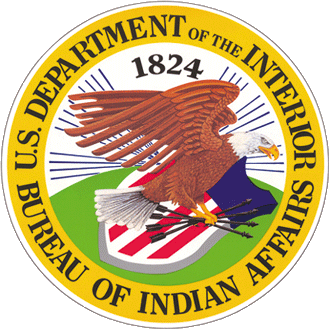Office of Indian Energy and Economic Development
2022 Tribal Tourism Grant Program (TTGP) Awards
The Office of Indian Economic Development (OIED) and Division of Economic Development (DED) manage Tribal Tourism Grant Program (TTGP) awards. TTGP grants are awarded to conduct Tribal tourism feasibility studies or develop Tribal tourism business plans.
2022 TTGP Awards
Haida Corporation: Hydaburg Tourism Feasibility Study, $150,000. The Hydaburg Tourism Feasibility Study will provide a roadmap for Haida Corporation to follow toward its goal of mindfully developing tourism.
Hualapai Tribal Council: Developing a Tribal Tourism Plan for the Hualapai Reservation, $150,000. The Tribe will develop a comprehensive 10-year tourism plan, starting with the historic Route 66 to the opening of the Grand Canyon Skywalk.
Muscogee Creek Nation: MCN Tribal Tourism Feasibility and Business Development Plan Project, $149,423. Muscogee Creek Nation will utilize the funding to perform a tourism project/market assessment and feasibility study and develop a tourism five-year business plan.
Village of Kaktovik: Polar Bear Tourism Feasibility Study, $149,270. Funding through the Tribal Tourism Grant Program will allow the Native Village of Kaktovik to conduct a feasibility study.
Mesa Grande Business Development Corporation: A Business Plan for Mesa Grande’s Agritourism Business, $149,212. The Mesa Grande Business Development Corporation (BDC) will be producing a comprehensive business plan for the operation and marketing of the tribe’s Golden Eagle Farm.
Penobscot Indian Nation: Penobscot Indian Nation Tourism Development Initiative, $149,010. The Penobscot Nation is advancing the Penobscot Indian Nation Tourism Development Initiative.
Blackfeet Tribe of the Blackfeet Indian Reservation of Montana: Blackfeet Tourism Business Plan, $125,388. The 2020 Tourism Feasibility Assessment produced by Virginia Tech supports development of the Blackfeet Heritage Visitor Center, which would serve as a tourism hub for visitors.
Choctaw Nation of Oklahoma: Choctaw Country Destination Management Plan, $125,000. The grant will allow for a contracted plan that will identify key stakeholders for the future of the Native American-based tourism industry in southeastern Oklahoma.
Spirit Lake Tribe: 2022 Spirit Lake Tribal Tourism Feasibility Study Project, $125.000. The Bay Mills Indian Community will perform a Feasibility Study to assess tourism diversification opportunities within our area.
Bay Mills Indian Community: BMIC Feasibility Study to Assess Tourism, $125,000. The Bay Mills Indian Community will perform a Feasibility Study to assess tourism diversification opportunities within our area.
The Chickasaw Nation: The Chickasaw Nation’s Exhibit C Gallery Project, $124,122. With the Tribal Tourism Grant Program, the Chickasaw Nation will develop a business plan to ensure local, regional and international tourism success.
Alabama-Coushatta Tribe of Texas: Alabama-Coushatta Tribe of Texas Travel and Tourism Planning, $120,291. The Alabama-Coushatta Tribe of Texas proposes the Planning and Prioritization of Tourism for the Alabama-Coushatta Tribe of Texas project as a tourism assessment, feasibility and planning project.
Indian Pueblo Cultural Center, Inc: IPCC Cultural Tourism Feasibility Study to Serve Pueblos and Larger State of New Mexico Economy, $113,251. The research and analysis will empower the IPCC with actionable data and analysis to make data informed decisions on potential tourism-oriented projects.
Crow Tribe of Montana: Apsaalooke Tourism Action Project, $112,771. The grant award will fund the establishment and development of the Apsaalooke Tourism Action Project (ATAP).
Wabanaki Public Health and Wellness: Wabanaki Ways Feasibility Study, $105,000. The Wabanaki will be conducting a feasibility study for the Wabanaki Way, an inter-connected Indigenous cultural tourism experience.
Leech Lake Reservation Business Community, Inc: The Creation of a Tourism Development Plan for the Leech Lake Band of Ojibwe, $104,515. The Leech Lake Band of Ojibwe Tourism Feasibility Study will identify the viability of investing in a tourism program for the Leech Lake Band of Ojibwe.
Burns Paiute Tribe: Foley Field Destination Resort Feasibility Study and Business Plan, $102,300. The Tourism-focused project will explore the potential for a destination resort facility for tourists.
Oneida Indian Nation: Oneida Indian Nation Tribal Tourism Feasibility Study, $101,762. The proposed Oneida National Tribal Tourism Feasibility Study will explore the possibility of adding motocross track facilities to Nation lands in Central New York.
Prairie Band Potawatomi Nation: Prairie Band Potawatomi Nation Shabbona Reservation Analysis, $82,764.The Prairie Band Potawatomi Nation will complete a feasibility study for the development on the Shabbona Reservation consisting of a Cultural Center, lodging, dining and retail spaces.
Northern Arapaho Tribe: Casino Amenity Market Assessment Feasibility Study, $78,701. The Northern Arapaho Tribe of Wyoming will conduct a Tribal Tourism Feasibility study to determine the optimal development location for a Casino Resort Development.
Rosebud Sioux Tribe: Rosebud Sioux Tribe Cultural Heritage Feasibility Study, $75,190. The Rosebud Sioux Tribe (RST) Sicangu Resource Development Office is conducting a comprehensive Feasibility Study Project on Cultural Heritage Tourism.
Coushatta Tribe of Louisiana: South Toledo Bend Park Feasibility Study, $72,672. The Coushatta Tribe is interested in negotiating ownership of the South Toledo Bend State Park.
Nansemond Indian Nation: Mattanock Town Ecotourism Center Feasibility Study and Business Plan, $72,720. The Mattanock Town Ecotourism Center Feasibility Study and Business Plan Tribal Tourism Grant Program study will enable the Tribe to identify possible ecotourism activities.
Lac Courte Oreilles Band of Lake Superior Chippewa Indians: Lac Courte Oreilles B&K Intersection/Tribal Plaza Tourism Project, $63,000. The feasibility study and business plan will allow the tribe to increase the tribe’s presence in the economy of the local area.
Enterprise Rancheria of Maidu Indians of California: The Enterprise Rancheria Sports & Entertainment Tourism Development Project, $55,066. The Enterprise Rancheria Maidu Tribe of California will be conducting a feasibility study for exploring a tourism designation for tourism economic development.
Sitka Tribe of Alaska: Moving Sitka Tribal Tours into the Future Business Planning Project, $54,708. STA hopes to utilize the business plan and the recommendations to transition the business model of Tribal Tours in to a more self-sustaining, revenue generating social enterprise.
Nez Perce Tribes: Development of the Nez Perce Tribal Tourism Business Plan, $49,408. The TTGP funding will enable the Nez Perce Tribe to conduct a comprehensive Tribal Tourism Business Plan over the next year.
Elk Valley Rancheria, California: Elk Valley Rancheria RV Park Feasibility Study Project, $48,600. The Elk Valley Rancheria will complete an economic Feasibility Study for development of an RV Park on reservation trust land.
Chippewa Cree Indians of the Rocky Boy’s Reservation, Montana: Chippewa Cree Indians of the Rocky Boy’s Reservation, Montana, $30,916. This plan will analyze the independent traveler market with a “do it yourself” focus, as opposed to a full-service lodge.
Additional Information
Related Pages
Contact Us
Washington, DC 20240


